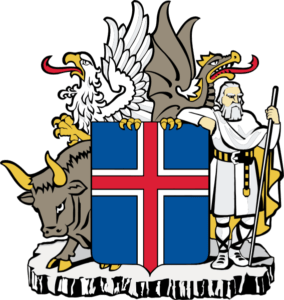Iceland

- Coat of arms of Iceland
- Capital City- Reykjavík
- Other Settlements – Dimmuborgir
- Languages –
- Religion(s) –
- Government –
- Legislature –
- Current Ruler –
- Other Notable residents – Bjorn Petursson
Iceland is a sparsely populated Nordic island country in the North Atlantic Ocean. It is volcanically and geologically active. The interior consists of lava fields, mountains and glaciers.
Druids lived in Iceland before Scandinavian settlers arrived. The settlement of Iceland began when the Norwegian chieftain Ingólfr Arnarson became the first permanent settler on the island. In the following centuries, Norwegians, and to a lesser extent other Scandinavians, immigrated to Iceland, bringing with them thralls of Irish or Scottish origin.
When most arable land on the island had been claimed; the Althing, a legislative and judicial assembly, was initiated to regulate the Icelandic Commonwealth. Lack of arable land also served impetus to the settlement of Greenland.
The Icelandic Commonwealth lasted until the political system devised by the original settlers proved unable to cope with the increasing power of Icelandic chieftains. The internal struggles and civil strife led to the signing of the Old Covenant, which ended the Commonwealth and brought Iceland under the Norwegian crown. Possession of Iceland passed from the Norwegian Empire to the Kalmar Union when the kingdoms of Norway, Denmark and Sweden were united.
After the break-up of the union Iceland became one of the poorest countries in Europe. With a series of natural disasters, including volcanic eruptions, famine and disease contributing to a decreasing population. Infertile soil deforestation and an unforgiving climate make for harsh life in a society where subsistence depended almost entirely on agriculture. Pirates from several countries, including the Barbary Coast, raid its coastal settlements and abducted people into slavery.

 Buy me a coffee
Buy me a coffee